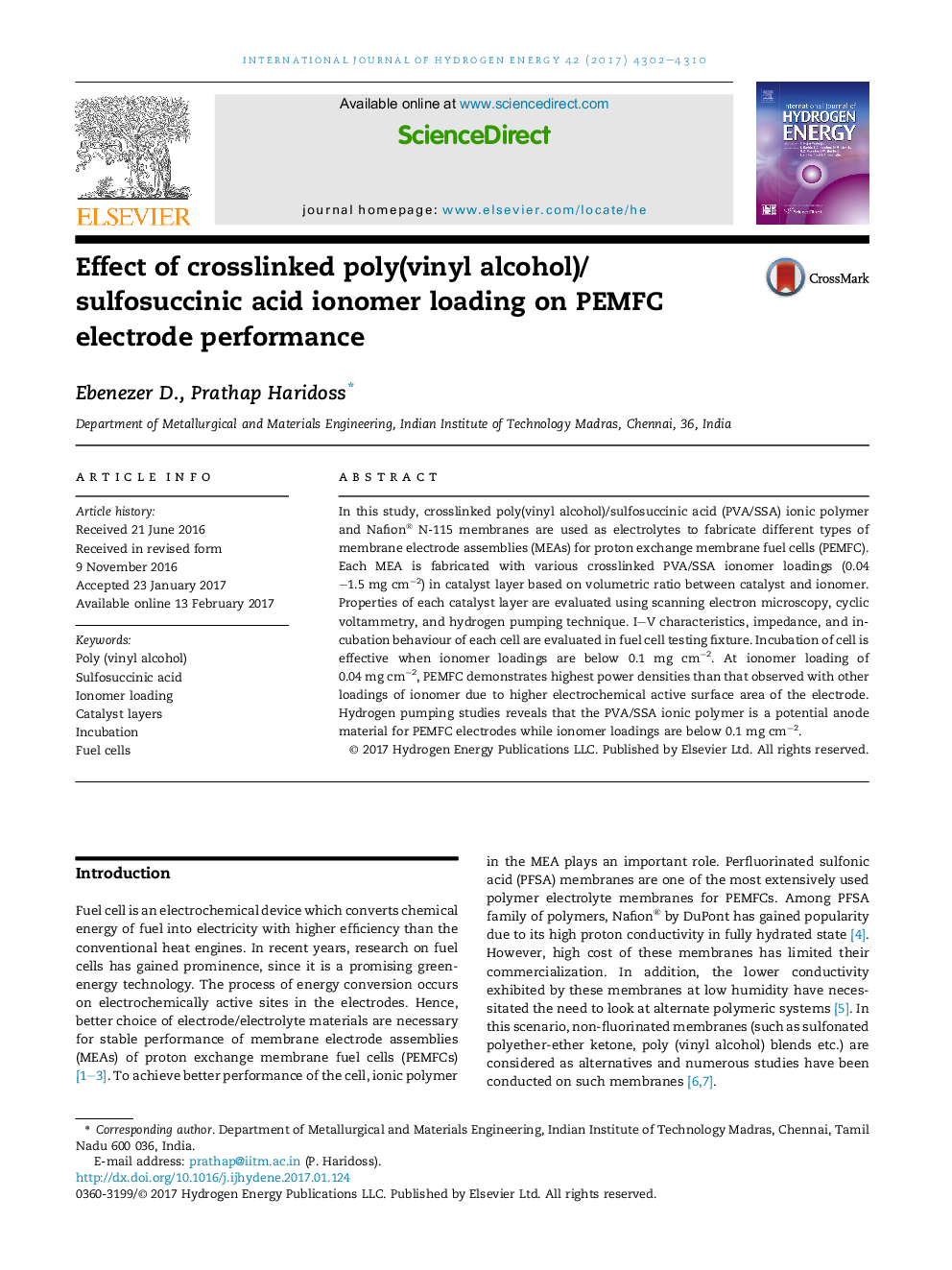| Article ID | Journal | Published Year | Pages | File Type |
|---|---|---|---|---|
| 5146350 | International Journal of Hydrogen Energy | 2017 | 9 Pages |
â¢Electrode has effective porous structure at ionomer loadings below 0.1 mg cmâ2.â¢Electrode has high active surface area when ionomer loading is 0.04 mg cmâ2.â¢Cell incubation occurs effectively at ionomer loadings less than 0.1 mg cmâ2.â¢PVA/SSA ionomer is suitable at anode in PFSA as well as PVA/SSA based MEAs.â¢PVA/SSA ionomer loadings below 0.1 mg cmâ2 are ideal for PEMFC anode materials.
In this study, crosslinked poly(vinyl alcohol)/sulfosuccinic acid (PVA/SSA) ionic polymer and Nafion® N-115 membranes are used as electrolytes to fabricate different types of membrane electrode assemblies (MEAs) for proton exchange membrane fuel cells (PEMFC). Each MEA is fabricated with various crosslinked PVA/SSA ionomer loadings (0.04-1.5 mg cmâ2) in catalyst layer based on volumetric ratio between catalyst and ionomer. Properties of each catalyst layer are evaluated using scanning electron microscopy, cyclic voltammetry, and hydrogen pumping technique. I-V characteristics, impedance, and incubation behaviour of each cell are evaluated in fuel cell testing fixture. Incubation of cell is effective when ionomer loadings are below 0.1 mg cmâ2. At ionomer loading of 0.04 mg cmâ2, PEMFC demonstrates highest power densities than that observed with other loadings of ionomer due to higher electrochemical active surface area of the electrode. Hydrogen pumping studies reveals that the PVA/SSA ionic polymer is a potential anode material for PEMFC electrodes while ionomer loadings are below 0.1 mg cmâ2.
